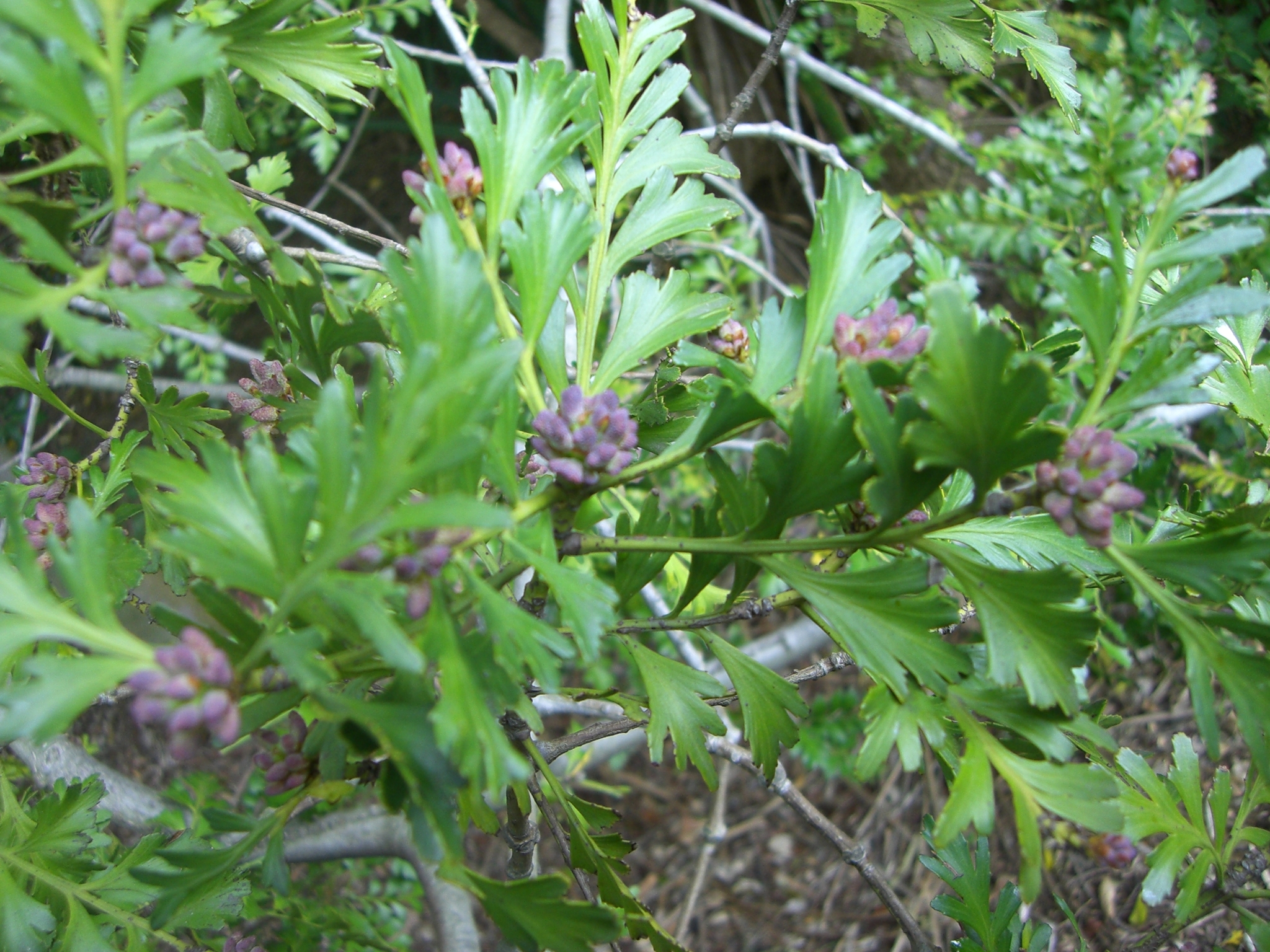
Greek phyllon - leaf, klados - branch.
Small to large mostly slow-growing trees and shrubs. Bark smooth, plated. Primary branches mostly in whorls. Branchlets of thick, leathery, flattened, leaf-like phylloclades (modified stems). The true leaves on adult plants are bract-like, linear or scaly. Plants mostly unisexual. Male cones cylindrical, in stalked terminal clusters. Female cones of few to many thickened, spirally-arranged scales, several of which bear a single erect ovule. Seed covered to at least half its length with a white covering (aril), the whole cone becoming bright red.
An anomalous member of the family Podocarpaceae sometimes considered sufficiently morphologically distinct to warrant its own family, Phyllocladaceae. A rare and very large specimen of P. hypophyllus Hook. from New Guinea, Indonesia and the Philippines can be seen at Brooklands Park, New Plymouth, New Zealand.
5 species mostly from moist areas of Tasmania (1), New Zealand (3) & Malesia (1 in upland temperate and tropical rainforest).
Seed is difficult to germinate; cuttings provide fair results but need natural mycorrhiza.
Leathery, flat, leaflike branches.
De Laubenfels (1969), Keng (1978), Quinn (1987).
Source: (1995). Podocarpaceae. In: . Horticultural Flora of South-eastern Australia. Volume 1, Ferns, conifers & their allies. The identification of garden and cultivated plants. University of New South Wales Press.
